JQ Magazine: Book Review – ‘Amorous Woman’

“Amorous Woman is well written—especially the vibrant, vivid sexual acts—and you get the feeling that this would make a great film (If nothing else, there would be some hilarious scenes).” (Iro Books)
By Rashaad Jorden (Yamagata-ken, 2008-2010) for JQ magazine. Rashaad worked at four elementary schools and three junior high schools on JET, and taught a weekly conversion class in Haguro (his village) to adults. He completed the Tokyo Marathon in 2010, and was also a member of a taiko group in Haguro.
If you were to tell stories centering on the most memorable aspects of your stay in Japan, what would you focus on?
Donna George Storey tackled the erotic. Her autobiographic eBook, Amorous Woman, brings out a side of Japan that many might not see. Inspired by Ihara Saikaku’s novel, The Life of an Amorous Woman, Storey brings to life the kinkiest aspects of her nine years in Japan, where she worked as an English teacher and a bar hostess, in addition to enjoying the company (to say the least) of countless Japanese men.
Amorous Woman actually doesn’t start in Japan but in San Francisco, where the novel’s protagonist Lydia is teaching Japanese business etiquette (despite the fact she knows little of it) to businessmen en route to the Land of the Rising Sun. But she’s actually planning to do a 180 from her life in Japan—Lydia has decided to model her life on a Japanese courtesan-turned-nun, a character that only lives in the fantasies of Ihara Saikaku. She even tells herself upon leaving Japan that she will never have sex again.
If only if it weren’t that easy to get the subject off her mind. Since she knows “plenty about picking up strangers in hot spring baths, handcuffing guys to beds in tacky love hotels,” among other things, she decides to tell the real story of her stay in Japan to two students over dinner. That’s when Amorous Woman really heats up.
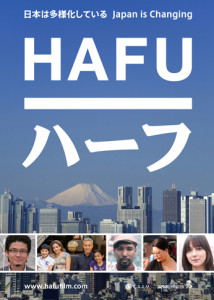
Hafu: The Mixed-Race Experience in Japan premieres in New York July 28. For more information, click here.
By Stacy Smith (Kumamoto-ken CIR, 2000-03) for JQ magazine. Stacy is a professional Japanese writer/interpreter/translator. She starts her day by watching Fujisankei’s newscast in Japanese, and shares some of the interesting tidbits and trends together with her own observations in the periodic series WITLife.
This weekend the annual Asian American International Film Festival will screen the new documentary Hafu: The Mixed-Race Experience in Japan (the title being the Romanization of “half” in Japanese), made by filmmakers Megumi Nishikura and Lara Perez Takagi and. Both half Japanese themselves, these women were inspired to undertake this project due to the lack of media attention on hafus and frustration with the shallow adoration of hafu celebrities on Japanese television.
The film begins with some informative statistics, such as that 2% of Japan’s population is foreign born and a striking 1 out of 49 babies is born to a family with a non-Japanese parent. These numbers have grown greatly over the last 30 years, and yet Japan is still lacking in its understanding of this diverse populace. Hafu features five half Japanese subjects, and their struggles and successes living in Japan today.
One of the families profiled is comprised of a Japanese father and a Mexican mother, who met while studying abroad in the U.S. They later married and now live in Nagoya with their two children. The older one, nine-year-old Alex, is having a hard time at his local school as the other kids tease him for being “English.” Alex’s parents believe that he needs a change in environment and decide to transfer him to an international school. He asks to spend some time in Mexico before the transition, and comes back from this trip brimming with confidence and an easing of the stutter that plagued him when he was being bullied (which his teachers had turned a blind eye to). Alex goes on to love his new school, make friends, and feel comfortable in his own skin without having to worry about being hafu.
JQ Magazine: Citizens of the Bay Area, Film Buffs, and Lovers of All Things Japanese, Lend Me Your Ears!

Catch the U.S. premiere of Evangelion 3.0: You Can (Not) Redo as part of NEW PEOPLE’s fifth annual J-POP Summit beginning July 27. (© khara. Licensed by FUNimation Productions, Ltd. All Rights Reserved.)
By Preston Hatfield (Yamanashi-ken, 2009-10) for JQ magazine. Preston received a BA in English literature with an emphasis in creative writing and a minor in Japanese at the University of California, Davis. After spending an amazing year on JET in Yamanashi, he spent a year writing and interning with book publishing companies in New York. He currently lives in Marin County, where he continues to cover local Japan-related stories for JQ, and teaches English as a second language at an international school in San Francisco.
Mark your calendars for the weekend of July 27 when NEW PEOPLE and the San Francisco Japantown Merchants Association kick off the fifth annual J-POP Summit. With a special thematic focus on the kawaii phenomenon, this extravaganza promises to be bigger and better than the last one (not unlike the stages of an RPG boss fight).
“Each year we strive to present a comprehensive cross-section of the latest in hot J-POP trends across fashion, film, art, music, anime/manga and pop culture that are happening in Japan NOW!” says event publicist Erik Jansen, who has been promoting the event since the beginning.
The weekend at NEW PEOPLE and Union Square promises a spectacular showcase of live music. In addition to performances by iconic pop star Kyary Pamyu Pamyu and LoVendoR, the new band featuring former Morning Musume star Reina Tanaka, you’ll also have the chance to hear Kylee, an American-born teenage singer whose stock has been rising steadily in the pop music scene. In case you’re worried if all that cutesy music is going to turn your brain to pudding, rest assured that a punk rock show by the Akabane Vulgars and Daichi’s beat boxing and vocal mix mastery will sculpt it back to its normal Jell-O consistency.
And if music isn’t your thing? “We always receive a wide variety of attendees, from ages 7 to 75 and from across all walks of life,” Jansen promises, and this year there will also be an array of other events, including a Harajuku-inspired fashion show, a Pop Gourmet food festival, a sake tasting hosted by the Japanese Consul General of San Francisco, a rebooted edition of the Real Escape Game, the Vocaloid Dance Contest and a full lineup of special guests including guest of honor Katsuya Terada, one of Japan’s greatest illustrators, who will be doing freehand drawings and signing autographs to promote his new art book at the Kinokuniya bookstore.
JQ Magazine: Book Review – ‘From Postwar to Postmodern, Art in Japan 1945-1989: Primary Documents’
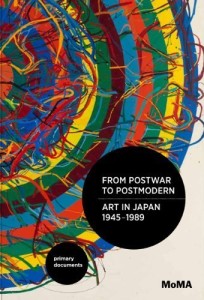
“What emerges from the multitude of ideas here is that art in Japan from this period is a visual record of repercussions that are still being felt today.” (Duke University Press)
By Jessica Sattell (Fukuoka-ken, 2007-08) for JQ magazine. Jessica is a freelance writer and a graduate student in arts journalism. She was previously the publicist for Japan-focused publishers Stone Bridge Press and Chin Music Press.
The abstract and avant-garde sculptor, painter and all-around revolutionary Japanese artist Tarō Okamoto famously said, “Art is an explostion” (geijutsu wa bakuhatsu da).
“Explosive” barely describes the energy and innovation in Japanese art in the latter half of the twentieth century. As From Postwar to Postmodern, Art in Japan 1945-1989: Primary Documents discusses, the decades between the end of World War II and the end of the Cold War marked an intensely fruitful period of groundbreaking creativity in Japan. The excitement, anxiety, and electricity that surged against the rigidity of old structures propelled Japanese art and artists into a much greater international conversation.
Published earlier this year by the Museum of Modern Art in New York and distributed by Duke University Press, this hefty tome accompanied the fall 2012-winter 2013 MoMA exhibition Tokyo 1955-1970: A New Avant Garde. There’s been a huge wave of both popular and scholarly interest in Japanese modern and contemporary art and dozens of high-profile shows at major North American museums and galleries, but the MoMA exhibit was the first to examine the “postwar” period that had been previously underrepresented. Part of this may be that the term “postwar” is tricky to define; the effects of WWII are undoubtedly still felt today and many argue that Japan is still “postwar.”
This book provides a solid foundation for an exploration of the issues and precedents leading up to the transformation of “postwar” art into the “postmodern” time. But, rather than simply rehash existing scholarship about Japanese history from 1945-1989, the book’s co-editors allow the artists, philosophers, critics and curators of this historical time to speak for themselves. The bulk of From Postwar to Postmodern includes a huge and multifaceted collection of primary source materials—personal essays, artist statements, interviews, magazine articles, interviews, critiques and manifestos—many of which have been translated into English for the very first time.
JQ Magazine: Film Review – JAPAN CUTS 2013 at Japan Society
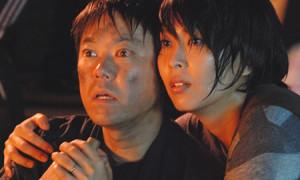
Dreams for Sale premieres July 13 at Japan Society in New York as part of their annual JAPAN CUTS film festival. (© 2012 Dreams for Sale Film Partners)
By Lyle Sylvander (Yokohama-shi, 2001-02) for JQ magazine. Lyle is entering a master’s program at the School of International and Public Affairs at Columbia University (MIA 2013) and has been writing for the JET Alumni Association since 2004. He is also the goalkeeper for FC Japan, a New York City-based soccer team.
Now in its seventh season, the JAPAN CUTS 2013 film festival runs from July 11-21 at Japan Society in New York and features less mainstream and more art house fare than in festivals past. JQ was able to screen three films from this year’s festival: Dreams for Sale (Yume Uru Futari), Helter Skelter (Heruta Sukeruta) and A Story of Yonosuke (Yokomichi Yonosuke).
Dreams for Sale, the most affecting of the three, tells the story of a young couple, Kanya (Sadao Abe) and Satoko (Takako Matsu), who find themselves in dire straits when their restaurant burns down to the ground. They soon realize, however, that the situation allows them to seek sympathy and romance money out of lonely singles that they encounter. This morality tale is directed in a naturalistic style by Miwa Nishiwaka. Within the director’s moving frame, the two main protagonists are allowed to express themselves both fully and in nuance as they work in tandem to bilk yen out of the unsuspecting victims.
What makes the film work so well is Nishikawa’s matter-of-fact stylistic depiction; she simply allows events to unfold naturally as the camera unobtrusively records them. At first, Kanya and Satoko’s cynical schemes have a darkly comic undertone, but gradually we, as the audience, begin to see the subtle changes that the couple undergoes as they begin to first doubt the morality of what they are doing and then doubt the strength of their own marriage and relationship. As in many great tragedies, this inner turmoil spills out into the external world as their actions have unpredictable repercussions beyond their control and affect unintended innocent victims.
JQ Magazine: Annual Japanese Summer Festival Heats Up Tampa
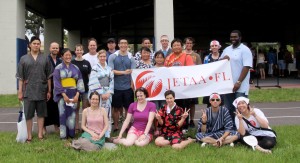
New JETs, JET alumni, and Consul Hayato Nakamura and family at Natsu Matsuri, Tampa, June 2013. (Amanda Bailey)
By Bahia Simons-Lane (Gunma-ken, 2005-07) for JQ magazine. Bahia is the president of the Florida JET Alumni Association.
Summer is a time when those of us who lived in Japan begin to feel nostalgic for the matsuri of our adopted home. In spite of the heat, the summer festivals of Japan were perfect little Japanese moments—just thinking about them brings the taste of yakisoba and takoyaki to your tongue. Sadly, these memories are fleeting.
It’s right around this time of year that the annual Tampa Natsu Matsuri is scheduled, which is why for the past three years I have packed up my car in Miami and embarked on the four hour drive north to help out. Tampa’s Natsu Matsuri provides a chance for newly recruited JETs, JET alumni, friends of JET, and members of the Japanese community in Florida to get together and enjoy the traditional Japanese summer festival experience, while also sharing Japanese culture with Florida residents who may not know much about Japan.
As the brainchild of Florida JETAA’s Tampa regional representative John McGee (Nagano-ken, 2004-05), the festival launched in 2006. Now attracting hundreds of people, Tampa Natsu Matsuri grows annually, with more booths and attendees each year. For this summer’s event, which was held on June 15, I was very excited about our new location at Christ the King Catholic Church, which gives the festival more space to grow, and provides an outdoor area with covering and lights in case of inclement weather. The festival itself features Japanese games for kids, such as kingyo sukui (goldfish scoop), Japanese culture demonstrations, and sales of Japanese food and goods. The okonomiyaki is always a hit, and this year a few food trucks even joined us for the event.
The festival is usually held in June or July. If you’re in Tampa next summer, I hope you’ll come relive your memories of Japanese summers.
To participate in or receive emails about Tampa Natsu Matsui, please email tampa@floridajetaa.org. For John McGee’s June 2012 JQ article about the history of the festival, click here.
JQ Magazine: JETerations — How Alumni Touch New Generations of JETs

Clare Grady and William Collazo representing fifteen years of JET at the Pre-Departure Orientation, Florida, 2012. (Courtesy of William Collazo)
By Bahia Simons-Lane (Gunma-ken, 2005-07) for JQ magazine. Bahia is the president of the Florida JET Alumni Association.
As a high school Japanese teacher in Deerfield Beach, Florida, WIlliam Collazo teaches his students about his time on JET along with his language lessons. Little did he know he would inspire a student to pursue JET years after she left his classroom.
Collazo said that JET was instrumental in deciding to become a Japanese teacher. He has a BA in Asian studies and religious studies, and he also studied Japanese language at Cornell University in New York. After JET, Collazo earned an MA in East Asian studies from Washington University in St. Louis, where he turned his academic interests to studying language pedagogy.
When he applied to the JET Program, he thought he would enjoy the work since he had some high school teaching experience, but mostly he was hoping to enhance his understanding of Japanese culture by living and working there. Instead, his two years on JET from 1997-99 in Hiroshima Prefecture were life-changing. “I didn’t think I would actually become a teacher of Japanese before going,” Collazo explained, “but my experience was so profound that I felt compelled to come home to Florida and share what I had learned in public education.”
His former student Clare Grady graduated from the University of Florida with a BA in Chinese and departed to Northern Gifu on the JET Program last year. It was Collazo’s stories of JET that inspired Grady to apply for the JET Program. It might seem surprising that Grady majored in Chinese and not Japanese, but by the time Grady entered university she already had considerable Japanese capability under her belt due to the Deerfield Beach International Baccalaureate (IB) program. She started studying Japanese when she entered high school, but after completing all the Japanese classes offered at her school she began teaching herself Chinese—earning her the nickname “Kanji Master.”
JQ Magazine: Book Review – ‘Persona’ and the Muddy, Dark Spiritualism of Yukio Mishima
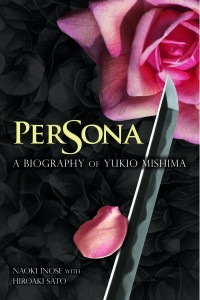
“Starting with an almost psychoanalytic exploration of Mishima’s childhood and on to the evolution of his sexuality, political beliefs and varied artistic influences, Persona tries as much as possible to demystify the man himself and his personal contradictions.” (Stone Bridge Press)
By Sharona Moskowitz (Fukuoka-ken, 2000-01) for JQ magazine. Sharona is interested in fresh, new voices in fiction and creative nonfiction.
Who was Yukio Mishima? Persona, the lengthy new tome by Naoki Inose (the current Governor of Tokyo) and Hiroaki Sato, seeks to answer that question with the use of a comprehensive set of primary resources such as interviews, unpublished writings and personal records. Kimitake Hiraoka was on track to follow in his father and grandfather’s footsteps as a career bureaucrat at the Ministry of Finance.
In addition to his favorable lineage, he had an impressive education and just the analytical mind such a career would have required. However, he decided to turn his back on the path he had paved for himself and instead try his hand at writing a novel. And so, Yukio Mishima was born and Confessions of a Mask would become the first literary gift he conferred on Japan and eventually the world.
One of Japan’s most famous authors and infamous icons is widely remembered for his dramatic public suicide by disembowelment in downtown Tokyo, though the authors of Persona make all attempts to explore every possible aspect of Mishima’s identity without letting his sensational death overshadow his life. Starting with an almost psychoanalytic exploration of his childhood and on to the evolution of his sexuality, political beliefs and varied artistic influences, Persona tries as much as possible to demystify the man himself and his personal contradictions; he was a stickler for convention with a penchant for taboo, fiercely Japanese with an affinity for western cultures, a man both highly disciplined and simmering with unchecked passion. Read More
JQ Magazine: Kyushu Battenkai – Sharing a Common Love of Japan with the JETAANY Community

At right, Governor Hodo Nakamura of Nagasaki Prefecture with JET alumna Christy Jones and Kyushu Battenkai members, New York, September 2012. (Mark Flanigan)
By Mark Flanigan (Nagasaki-ken, 2000-04) for JQ magazine. Mark is a program director with The Japan ICU Foundation in New York. Prior to his current position, he was a Rotary Peace Fellow at International Christian University in Tokyo.
The JET Alumni Association of New York is fortunate to benefit from the diversity of such a major metropolitan area like greater NYC. As JET alumni, the members also have the pleasure of joining in with various events and activities with other Japan-related organizations. One of the most active of these organizations over the past few years is the Kyushu Battenkai. JETAANY members have been fortunate to be able to enjoy many get-togethers with them here in the city.
What is Kyushu Battenkai? It’s a very friendly and casual New York civic-based organization that was founded in 1997. Unlike many more formal Japanese organizations, they have no membership fee or official application process. They communicate with their approximately 150 members primarily by email as well as with updates on their website, which was launched in 2007.
The organization was started by a small group of New York-based Japanese people primarily from Nagasaki and Saga Prefectures. They later expanded to include people from all over Kyushu, and have added more activities over the years. They used to celebrate with just the Bonnenkai and Shinnenkai events, but now include about five events throughout the year, including festive spring and summer festival parties and, more recently, exciting jointly planned events with JETAANY.
JQ Magazine: COBU Gives Sakura Matsuri Season a Beat

Takae Kawabe, a member of the all-female New York City-based taiko group COBU. (Courtesy of Takae Kawabe)
By Kirsten Phillips (Niigata-ken, 2005-2008) for JQ magazine. Kirsten is a native New Yorker and currently works as a teacher for the New York Board of Education.
Sakura matsuri season is upon us. For JET returnees, this time of year hearkens back to picnics with friends or students. Copious amounts of alcohol under the pink shower of blossoms and maneuvering through crowded lines of vendors celebrating the coming of spring. Sakura season also brings out the finest Japanese talent in New York and no event worth mentioning would be whole without the beating heart of COBU.
You haven’t been following COBU around like a bloodhound? Shame on you. Don’t even know what a COBU is? Double shame on you. Fortunately, oneesan is here to clue you in.
Spearheaded by artist and visionary Yako Miyamoto, COBU is more of a statement in taiko than a collaboration. We are heard. We are seen. We are felt. We are here. A handful of iron women play tirelessly in perfect sync. A little humor, an appropriate smattering of sexy and a metric ton of showmanship make COBU a delight for audiences across the tri-state area.
This year’s Branch Brook Park performance in New Jersey was a staggering hit by COBU, showcasing the talent of their following, or deshi. Upstage, COBU performing members Micro Fukuyama and Haruna Hisada kept time and loudly cheered on the fledgling members as they demonstrated some of COBU’S trademark choreography and pulsing patterns. If you have ever witnessed a COBU show before, it’s easy to become dazzled by the performing members, but this showcase invited audiences to the notion that, hey, they can be a part of this rhythm, too.
JQ Magazine: JETAA New York Greets Distinguished Guests
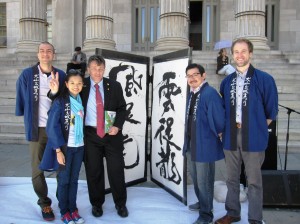
Inuyama City Council Member Anthony Bianchi, center, poses with fellow JET alums at the Japan Friendship Festival, Brooklyn Borough Hall Plaza, May 2013. (Photo courtesy of Ann Chow)
By Ann Chow (Hyogo-ken, 2007-09) for JQ magazine. Ann is a native New Yorker and serves as the Membership Development Chair for the JET Alumni Association of New York.
On April 17, members of the JET Alumni Association of New York (JETAANY) were invited to attend a reception at the Nippon Club for the Governor of Tokyo, Naoki Inose, who was in New York to drum up support for his city’s bid for the 2020 Summer Olympics and Paralympics. Among the guests at the reception included Willie Banks, the three-time track and field Olympian, and world record holder from 1985-95 in Men’s Triple Jump. (Cool trivia: Banks speaks fluent Japanese.)
And on May 3, several JETAANY members, along with employees of CLAIR and the Japanese consulate, were on site to help Inuyama City Council Member Anthony Bianchi (Aichi-ken, 1987-91) and B. Bridges participants at the Japan Friendship Festival at Brooklyn Borough Hall Plaza. The B. Bridges program (short for “Brooklyn Bridge” as well as “Building Bridges” and “Be Bridges”) was created as a cultural exchange program by Bianchi and the administration of Xaverian High School, of which Bianchi is an alumnus.
“The idea for the B. Bridges exchange program was born 10 years ago at an event the Brooklyn Borough President, Marty Markowitz, held for me at Borough Hall after my first election, so it was great to be able to hold this, our Japan Friendship Festival: Inuyama Day at Borough Hall,” Bianchi said.
The program has sent close to 500 people from Brooklyn to Inuyama City and vice versa. This year, 40 participants came from Inuyama City to stay with families of students attending the school. On a beautiful sunny day, JETAANY members were able to help the group out at various booths which showcased tea ceremony, Japanese calligraphy, and traditional Japanese toys and wares.
“The cooperation of the Brooklyn Borough President’s Office, the Japanese Consulate of New York, the Japan Local Government Center, and the JET Alumni Association of New York were crucial to making this event successful,” explained Bianchi.
He added: “I was also proud of our B. Bridges members, as well as our exchange partners at Xaverian High School, who made great use of the opportunity. This, I believe, made the event a great experience for all those in attendance.”
For additional photos from the events, click here and here.
JQ Magazine: Cultural Heritage Soars in San Francisco’s Japantown
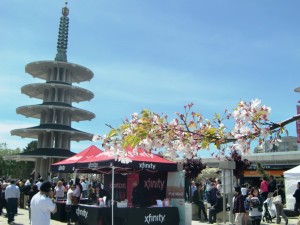
Under the Peace Pagoda at the Northern California Cherry Blossom Festival, San Francisco, April 2013. (Preston Hatfield)
By Preston Hatfield (Yamanashi-ken, 2009-10) for JQ magazine. Preston received a B.A. in English literature with an emphasis in creative writing and a minor in Japanese at the University of California, Davis. After spending an amazing year on JET in Yamanashi, he spent a year writing and interning with book publishing companies in New York. He currently lives in Marin County, where he continues to cover local Japan-related stories for JQ, and teaches English as a second language at an international school in San Francisco.
This April marks the forty-sixth time that San Francisco has hosted the Northern California Cherry Blossom Festival. As one of the world’s top annual festivals of its kind and one of the largest Japanese American events in the country, the festival has made quite a reputation for itself, and each year it’s bigger and better. Whether you’ve been to Japan before and need a fix of your favorite street food, or you’re a newbie interested in exploring the culture, the NCCBF offers a comprehensive and top-notch Japan experience that includes traditional and modern elements.
If you’ve been to other festivals, you already know to expect tea ceremony demonstrations, doll exhibits, taiko performances, and cosplay competitions, but pay attention and you’ll also notice a powerful sense of community in every act and exhibit. Excepting a handful of wonderful guests from Japan (including this year’s Grand Marshal, renowned singer and actor Teruhiko Saigo), the NCCBF is put on wholly by the Bay Area’s Japanese American community, including some 300 volunteers, 50 organizations, schools, and groups, and is sponsored by a number of local businesses. In some respects, it’s their way of making a statement, as Allen Okamoto, co-chairman of the NCCBF, explains:
“One of the reasons I continue to volunteer with the festival is that Japantown is rapidly changing. The demographics of the community are changing with the intermarriage and lack of migration from Japan. I consider the festival as an institution the same as the Japanese language schools, the churches and other community organizations like the Japanese Community Youth Council, Kimochi, Inc. and the Japanese Cultural & Community Center. We are all continuing the culture and heritage of things Japanese.”
The festival has become something of a culture treasure here, and it’s no wonder. San Francisco, with a formidable but recently declining Japanese American population, is home to one of the last “true” Japantowns in the U.S., but some locals think that’s debatable. “I saw [at the festival] a hardworking community [bringing] culture and fun to Japantown, which for the rest of the year is slowly being eaten by non-Japanese businesses. Koreatown sometimes feels more appropriate,” said Bay Area resident and JET alum Mikeal Gibson.
JQ Magazine: Film Review – ‘Live Your Dream: The Taylor Anderson Story’
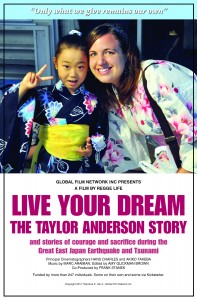
“Laced with emotional reflections, vivid photos and jovial home movies, the film walks the viewer through Taylor’s 24 years on earth and untimely end caused by the Great East Japan Earthquake and Tsunami of 2011.” (Global Film Network Inc.)
By Renay Loper (Iwate-ken, 2006-07) for JQ magazine. Renay is a freelance writer and associate program officer at the Japan Foundation Center for Global Partnership. Visit her blog at Atlas in Her Hand.
Directed by renowned filmmaker and founder of Global Film Network Regge Life, Live Your Dream: The Taylor Anderson Story is Life’s first documentary about a loss.
Best known for his features like Doubles (about Japan and America’s intercultural children), After America…After Japan (about the migration of Americans to Japan and Japanese to America) and Struggle and Success: The African American Experience in Japan, Life opens the window for the viewer to glimpse the life of Taylor Anderson (Miyagi-ken, 2008-11) through personal accounts from her loved ones. Laced with emotional reflections, vivid photos and jovial home movies, the film walks the viewer through Taylor’s 24 years on earth and untimely end caused by the Great East Japan Earthquake and Tsunami of 2011. In light of the tragedy, the film sends a message of hope, optimism and encouragement for all to follow their hearts.
The film is divided into chapters, beginning with the first, “She Took Her Time.” Jean Anderson, Taylor’s mother, reveals how in everything Taylor did, she did it at her own pace, including her birth: she was 11 days late. According to her father, Andy Anderson, Taylor grew up inquisitive, interested and easygoing, never letting anyone influence her decisions. Julia Anderson-Kerr and Jeffrey Anderson (Taylor’s sister and brother, respectively) shared what it was like to grow up with such a peaceful and patient sibling.
From as early as they could remember, Taylor was into reading, exploring and having fun. Growing up near Richmond, VA, she was first introduced to Japanese at Millwood Elementary School. Her teacher exposed her to the language, artifacts and clothing of Japan at an early age, and from that point on she was hooked. Unfortunately, when she moved on to St. Catherine’s High School, Japanese was not an option, so she continued to study on her own.
It wasn’t until her college years at Randolph-Macon College in nearby Ashland that Taylor had the opportunity to visit Japan. She traveled to Tokyo for a January course designed to expose students to the history of the city. Later that summer, Taylor taught at a Japanese language academy, where she was adored by all. It was because of Taylor’s contagious zeal for Japan that her childhood friends and classmates became interested in the country and culture as well. She exposed them to anime, manga and the films of Hayao Miyazaki, inspiring some of them to travel to Japan and explore it for themselves.
JQ Magazine: JQ&A with JUSTE Program Participant Saiko Goto
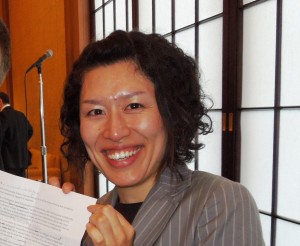
“In Minamisanriku, the local government wanted to keep the shiyakusho (city hall) as a memorial for the tsunami, but people who lost family there disagreed. Finally, the building was demolished recently. It reminded us of sad stories and memories of people who escaped to city hall during the tsunami.” (Courtesy of Saiko Goto)
By Fernando Rojas (Fukui-ken, 2008-10) for JQ magazine. A resident of Teaneck, New Jersey, Fernando was JHS ALT in Fukui prefecture, home of the echizen-gani, a city named Obama, the Fukuisaurus, and nuclear power plants. While in Japan, he picked up shuji (Japanese calligraphy) as his hobby and continues to practice today. He is currently a fellowships associate for the Social Science Research Council’s Abe Fellowship Program in Brooklyn and co-representative for the JETAA New Jersey subchapter.
Hailing from Tome City in Miyagi Prefecture, Saiko Goto was a recent JUSTE Program participant at Rutgers University in New Jersey. Informally called the “Reverse JET Program,” the Japan–U.S. Training and Exchange Program for Language Teachers allows Japanese Teachers of English (JTEs) from all over Japan to take courses in ESL teaching at U.S. universities.
Goto received her teaching license from Gunma Prefecture Women’s University, where she majored in English. She currently teaches at Sakuma Junior High School and has taught English for eight years. Before returning to Japan in January, Goto spoke with JQ about JUSTE and the ongoing impact of the March 11 earthquake and tsunami on her school.
How are teachers selected to participate in the JUSTE program?
Teachers are selected according to their prefectures. In some prefectures, teachers have to apply for the program. In other prefectures, teachers are picked by the board of education. In my case, I was recommended by my principal to the Tome City Board of Education and selected by the Miyagi Prefecture Board of Education.
Have you found the JUSTE program beneficial? In what ways has the program helped you?
Being on JUSTE has been very beneficial. I have met and talked with many people from different countries, as well as learned a lot from them through English. I have also thought more about my teaching and the importance of learning English. The program has also helped me to create more effective activities. I made many activities with other JUSTE members and we will use them in my classes.
Would you recommend the program to other JTEs in Japan?
Definitely. By participating in the program, you can have many chances for meeting people and learn a lot. I visited a former ALT during the winter vacation and experienced life in Arkansas with her and her family. I also became friends with other JUSTE participants. We will share our list of activities with each other online and keep in touch.
JQ Magazine: Life After JET on YouTube
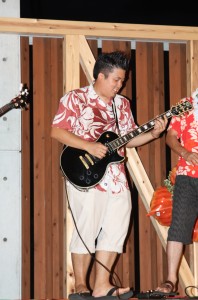
JET alum Eliot Honda: “With my year coming to a close, I wanted to create a set of videos that would not only explain what to expect as an ALT, but also what to expect as an Uwajima ALT. I had truly come to love this city, and I wanted to show off some of its beauty and history.”
By Eliot Honda (Ehime-ken, 2009-2012) for JQ magazine. Born and raised in Honolulu, Eliot was an ALT placed in Uwajima City of Ehime Prefecture. Prior to JET, Eliot worked as a freelance video editor mainly in the commercial and corporate world in San Francisco. Following JET, he returned to Honolulu and joined his mother in real estate. He currently has made a JET Introduction video, and has a YouTube series in the works called Sister City Ties, showing the beauty of the friendship between Honolulu and Uwajima.
My father always preached that “everything happens for a reason.” My being placed in Uwajima was no exception. Uwajima, as I would come to find out, had strong ties to my home of Hawaii. King Kalakaua of Hawaii and Date Munenari of Uwajima had met in 1881, becoming Japan’s first contact with a head of state. Uwajima and Hawaii would meet again in 2001 when the Ehime Maru, a high school fishing vessel, would be struck by a U.S. submarine. Nine lives would be tragically lost, including four high school students.
News of the tragedy spread quickly through Hawaii, causing the people to do everything they could to help the Uwajima families. Whole those families could have shown hate and anger toward the people of Hawaii, they instead embraced the people of the Aloha State with open arms. Through this tragedy, a friendship between Honolulu and Uwajima was born, giving way to the creation of a sister city relationship. To help strengthen the ties between the two cities, the mayor of Uwajima requested ALTs who were born in Hawaii. I found myself to be one of the lucky few chosen to represent Hawaii there as my time on the JET Program began.
I came to Uwajima with all these grand ideas of using video in my lessons. A month into my first year as an Uwajima ALT, I came to the realization that utilizing video in the classroom or in school for that matter would be an impossible task. If finding students willing to speak English in front of the class was difficult, finding students to speak English in front of a camera would be like moving the Hawaiian Islands with a fish hook. (I think only Hawaii people will get that reference.)
Feeling a bit defeated, I sat in my apartment and contemplated how I could put everything I’d learned in the multimedia world to good use. As fate would have, it I was asked by one of the Ehime Maru family members to join the Ehime Maru memorial service, and create a documentary not about the tragedy, but about the friendship between Honolulu and Uwajima. The documentary was for the schools in Ehime, and upon completion, DVDs were given to a large number of schools. This single video became the start of several videos for both the sister city exchange and the promotion of Uwajima.

